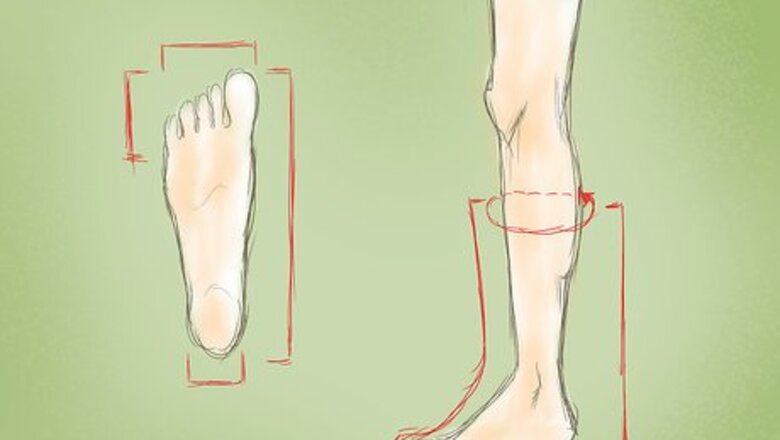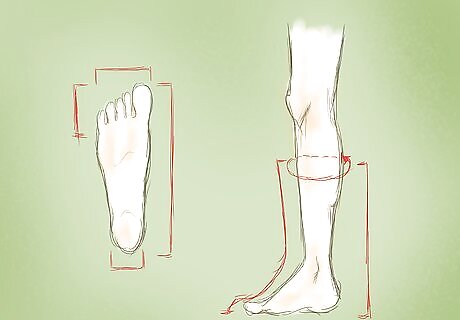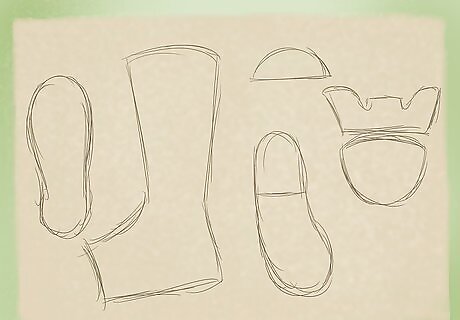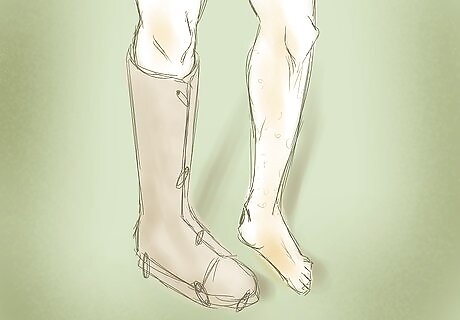
views

Take measurements. First, you'll need to take measurements of your naked or socked foot (if you plan to wear socks with the boots on). Measure in the unit that's most familiar to you; inches are used in these examples and explanations. You need to decide at this point how tall the boot will be.*toe to heel*widest width (ball of foot)*narrowest width (heel of foot)*toe to widest point*toe to top of boot (following the contour of your leg)*heel to top of boot*circumference of your calf at widest point (varies with height of boot)

Make a template using your measurements. Trace it onto an old t-shirt or inexpensive fabric. Use this blank template to get an idea for the shape. Fill in the measurements and adjust the template as shown in this example for boots set to be about 9.5" tall.

Try it on and make adjustments. Cut out the template and try it on, holding it together using safety pins, to see how the fit will be. Trim it for a more contoured fit if necessary.

Cut the final material. Lay the adjusted template over the final material (e.g. suede) and cut carefully.

Make the lace holes. Given that lace holes are an inch apart, multiply the number of lace holes on ONE SIDE of your boot times 10 to determine how much lacing you will need. If you make 10 lace holes each an inch apart, you need 90 to 100 inches (228.6 to 254.0 cm) of lacing to tie your boots. And that's just for the front of one boot! The back should take a bit less, since there's no slope, so let's say 8 holes x 9 = 72". For two boots, you'll need about 344" (~29 ft.) of rawhide laces to make these work! Fortunately, rawhide is cheap and comes commonly in 10 meter (~33 ft) spools. You can cut down on the rawhide consumption by using a straight-up lace and knot (instead of the criss-cross) for the back of the boot, or making your lace holes farther apart. You may also need more or less depending on how much gap you leave between the side flaps, the height of the boot, etc. Beware of compromising here though -- laces set further apart mean less stability, looser seams, and gaps in material (through which bugs/dirt may enter) etc.




















Comments
0 comment